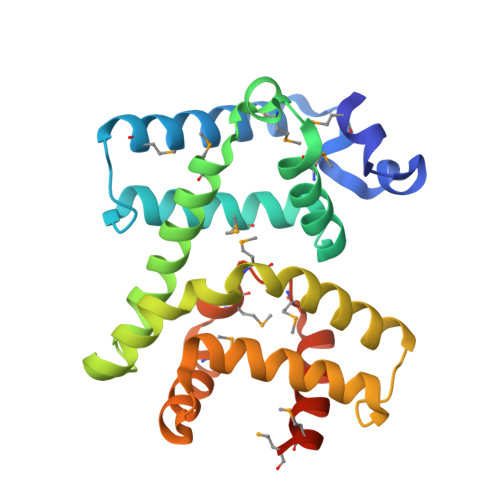Adaptation of a Bacterial Multidrug Resistance System Revealed by the Structure and Function of AlbA.
Sikandar, A., Cirnski, K., Testolin, G., Volz, C., Bronstrup, M., Kalinina, O.V., Muller, R., Koehnke, J.(2018) J Am Chem Soc 140: 16641-16649
- PubMed: 30422653
- DOI: https://doi.org/10.1021/jacs.8b08895
- Primary Citation of Related Structures:
6H95, 6H96, 6H97, 6HAI - PubMed Abstract:
To combat the rise of antimicrobial resistance, the discovery of new antibiotics is paramount. Albicidin and cystobactamid are related natural product antibiotics with potent activity against Gram-positive and, crucially, Gram-negative pathogens. AlbA has been reported to neutralize albicidin by binding it with nanomolar affinity. To understand this potential resistance mechanism, we determined structures of AlbA and its complex with albicidin. The structures revealed AlbA to be comprised of two domains, each unexpectedly resembling the multiantibiotic neutralizing protein TipA. Binding of the long albicidin molecule was shared pseudosymmetrically between the two domains. The structure also revealed an unexpected chemical modification of albicidin, which we demonstrate to be promoted by AlbA, and to reduce albicidin potency; we propose a mechanism for this reaction. Overall, our findings suggest that AlbA arose through internal duplication in an ancient TipA-like gene, leading to a new binding scaffold adapted to the sequestration of long-chain antibiotics.
Organizational Affiliation:
Workgroup Structural Biology of Biosynthetic Enzymes, Helmholtz Institute for Pharmaceutical Research Saarland , Helmholtz Centre for Infection Research, Saarland University , Campus Geb. E8.1 , Saarbrücken 66123 , Germany.






















